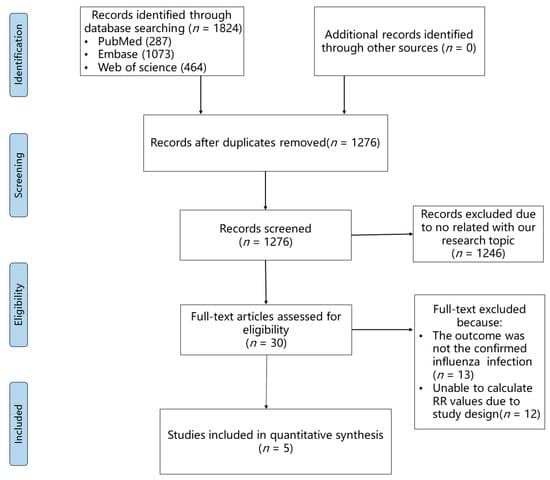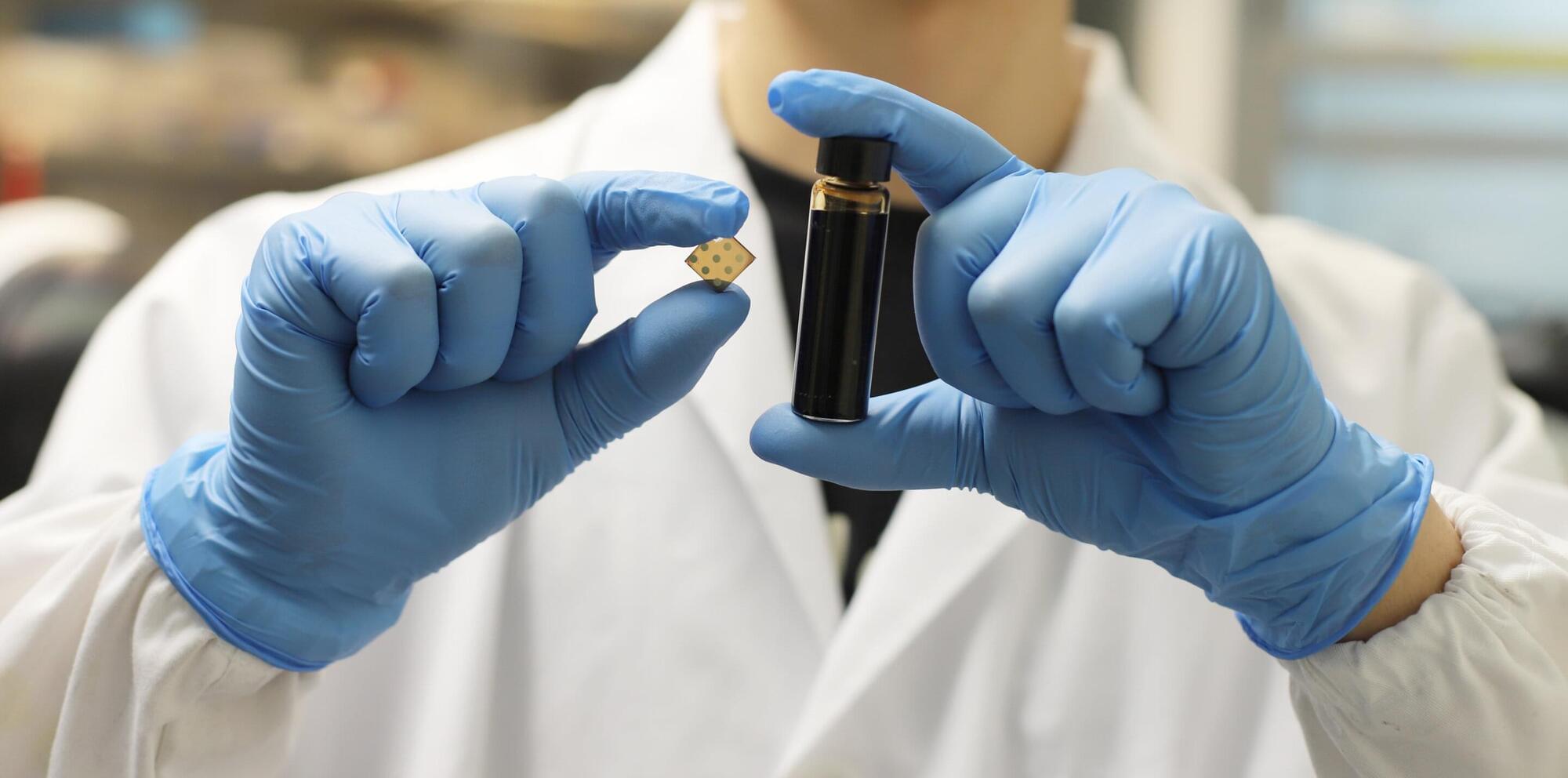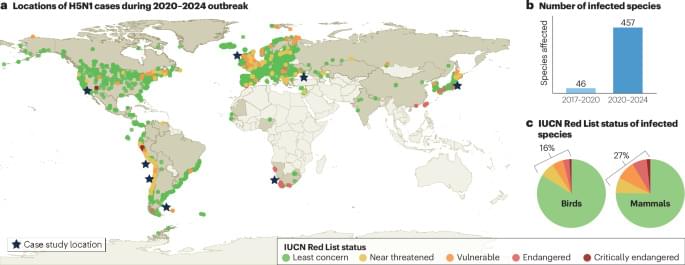Thailand debuts AI police robot at Songkran festival to enhance public safety with smart surveillance and facial recognition tech.
Category: surveillance – Page 4
Battlestar Galactica Predicted The Future!
Today, we’re diving into how the 2004 reboot of Battlestar Galactica didn’t just serve up emotionally broken pilots and sexy robots—it predicted our entire streaming surveillance nightmare. From Cylons with download-ready consciousness to humans drowning in misinformation, BSG basically handed us a roadmap to 2025… and we thanked it with fan theories and Funko Pops.
🔎 Surveillance culture? Check.
👤 Digital identity crises? Double check.
🤯 Manufactured realities? Oh, we’re way past that.
Turns out, the Cylons didn’t need to invade Earth. We became them—scrolling, uploading, and streaming our humanity away one click at a time.
So join me as we break it all down and honor the sci-fi series that turned out to be way more documentary than dystopia.
👉 Hit like, share with your fellow glitchy humans, and check out egotasticfuntime.com before the algorithm decides fun is obsolete!
#BattlestarGalactica.

Association between Statins Administration and Influenza Susceptibility: A Systematic Review and Meta-Analysis of Longitudinal Studies
Previous studies reported that the association between statins use and influenza infection was contradictory. A systematic review and meta-analysis of longitudinal studies were performed to determine the association between statins use and influenza susceptibility. The literature search was conducted in PubMed, Embase, and Web of Science, from each database’s inception to 21 May 2023. The fixed effect model and random effects model were used for data synthesis. In our study, a total of 1,472,239 statins users and 1,486,881 statins non-users from five articles were included. The pooled risk ratio (RR) of all included participants was 1.05 (95% CI: 1.03–1.07), and there were still significant differences after adjusting for vaccination status. Of note, RR values in statins users were 1.06 (95% CI: 1.03–1.08) in people aged ≥60 years old and 1.05 (95% CI: 1.03–1.07) in participant groups with a higher proportion of females. Administration of statins might be associated with an increased risk of influenza infection, especially among females and elderly people. For those people using statins, we should pay more attention to surveillance of their health conditions and take measures to prevent influenza infection.

Infrared heavy-metal-free quantum dots deliver sensitive and fast sensors for eye-safe LIDAR applications
The frequency regime lying in the shortwave infrared (SWIR) has very unique properties that make it ideal for several applications, such as being less affected by atmospheric scattering as well as being “eye-safe.” These include Light Detection and Ranging (LIDAR), a method for determining ranges and distances using lasers, space localization and mapping, adverse weather imaging for surveillance and automotive safety, environmental monitoring, and many others.
However, SWIR light is currently confined to niche areas, like scientific instrumentation and military use, mainly because SWIR photodetectors rely on expensive and difficult-to-manufacture materials. In the past few years, colloidal quantum dots —solution-processed semiconducting nanocrystals—have emerged as an alternative for mainstream consumer electronics.
While toxic heavy-metals (like lead or mercury) have typically been used, quantum dots can also be made with environmentally friendly materials such as silver telluride (Ag2Te). In fact, silver telluride colloidal quantum dots show device performance comparable to their toxic counterparts. But they are still in their infancy, and several challenges must be addressed before they can be used in practical applications.

Combining photonic neural networks with distributed acoustic sensing for infrastructure monitoring
Distributed acoustic sensing (DAS) systems represent cutting-edge technology in infrastructure monitoring, capable of detecting minute vibrations along fiber optic cables spanning tens of kilometers. These systems have proven invaluable for applications ranging from earthquake detection and oil exploration to railway monitoring and submarine cable surveillance.
However, the massive amounts of data generated by these systems create a significant bottleneck in processing speed, limiting their effectiveness for real-time applications where immediate responses are crucial.
Machine learning techniques, particularly neural networks, have emerged as a promising solution for processing DAS data more efficiently. While the processing capabilities of traditional electronic computing using CPUs and GPUs have massively improved over the past decades, they still face fundamental limitations in speed and energy efficiency. In contrast, photonic neural networks, which use light instead of electricity for computations, offer a revolutionary alternative, potentially achieving much higher processing speeds at a fraction of the power.
Why a global federation might be needed to manage AI
Rufo Guerreschi.
https://www.linkedin.com/in/rufoguerreschi.
Coalition for a Baruch Plan for AI
https://www.cbpai.org/
0:00 Intro.
0:21 Rufo Guerreschi.
0:28 Contents.
0:41 Part 1: Why we have a governance problem.
1:18 From e-democracy to cybersecurity.
2:42 Snowden showed that international standards were needed.
3:55 Taking the needs of intelligence agencies into account.
4:24 ChatGPT was a wake up moment for privacy.
5:08 Living in Geneva to interface with states.
5:57 Decision making is high up in government.
6:26 Coalition for a Baruch plan for AI
7:12 Parallels to organizations to manage nuclear safety.
8:11 Hidden coordination between intelligence agencies.
8:57 Intergovernmental treaties are not tight.
10:19 The original Baruch plan in 1946
11:28 Why the original Baruch plan did not succeed.
12:27 We almost had a different international structure.
12:54 A global monopoly on violence.
14:04 Could expand to other weapons.
14:39 AI is a second opportunity for global governance.
15:19 After Soviet tests, there was no secret to keep.
16:22 Proliferation risk of AI tech is much greater?
17:44 Scale and timeline of AI risk.
19:04 Capabilities of security agencies.
20:02 Internal capabilities of leading AI labs.
20:58 Governments care about impactful technologies.
22:06 Government compute, risk, other capabilities.
23:05 Are domestic labs outside their jurisdiction?
23:41 What are the timelines where change is required?
24:54 Scientists, Musk, Amodei.
26:24 Recursive self improvement and loss of control.
27:22 A grand gamble, the rosy perspective of CEOs.
28:20 CEOs can’t really say anything else.
28:59 Altman, Trump, Softbank pursuing superintelligence.
30:01 Superintelligence is clearly defined by Nick Bostrom.
30:52 Explain to people what “superintelligence” means.
31:32 Jobs created by Stargate project?
32:14 Will centralize power.
33:33 Sharing of the benefits needs to be ensured.
34:26 We are running out of time.
35:27 Conditional treaty idea.
36:34 Part 2: We can do this without a global dictatorship.
36:44 Dictatorship concerns are very reasonable.
37:19 Global power is already highly concentrated.
38:13 We are already in a surveillance world.
39:18 Affects influential people especially.
40:13 Surveillance is largely unaccountable.
41:35 Why did this machinery of surveillance evolve?
42:34 Shadow activities.
43:37 Choice of safety vs liberty (privacy)
44:26 How can this dichotomy be rephrased?
45:23 Revisit supply chains and lawful access.
46:37 Why the government broke all security at all levels.
47:17 The encryption wars and export controls.
48:16 Front door mechanism replaced by back door.
49:21 The world we could live in.
50:03 What would responding to requests look like?
50:50 Apple may be leaving “bug doors” intentionally.
52:23 Apple under same constraints as government.
52:51 There are backdoors everywhere.
53:45 China and the US need to both trust AI tech.
55:10 Technical debt of past unsolved problems.
55:53 Actually a governance debt (social-technical)
56:38 Provably safe or guaranteed safe AI
57:19 Requirement: Governance plus lawful access.
58:46 Tor, Signal, etc are often wishful thinking.
59:26 Can restructure incentives.
59:51 Restrict proliferation without dragnet?
1:00:36 Physical plus focused surveillance.
1:02:21 Dragnet surveillance since the telegraph.
1:03:07 We have to build a digital dog.
1:04:14 The dream of cyber libertarians.
1:04:54 Is the government out to get you?
1:05:55 Targeted surveillance is more important.
1:06:57 A proper warrant process leveraging citizens.
1:08:43 Just like procedures for elections.
1:09:41 Use democratic system during chip fabrication.
1:10:49 How democracy can help with technical challenges.
1:11:31 Current world: anarchy between countries.
1:12:25 Only those with the most guns and money rule.
1:13:19 Everyone needing to spend a lot on military.
1:14:04 AI also engages states in a race.
1:15:16 Anarchy is not a given: US example.
1:16:05 The forming of the United States.
1:17:24 This federacy model could apply to AI
1:18:03 Same idea was even proposed by Sam Altman.
1:18:54 How can we maximize the chances of success?
1:19:46 Part 3: How to actually form international treaties.
1:20:09 Calling for a world government scares people.
1:21:17 Genuine risk of global dictatorship.
1:21:45 We need a world /federal/ democratic government.
1:23:02 Why people are not outspoken.
1:24:12 Isn’t it hard to get everyone on one page?
1:25:20 Moving from anarchy to a social contract.
1:26:11 Many states have very little sovereignty.
1:26:53 Different religions didn’t prevent common ground.
1:28:16 China and US political systems similar.
1:30:14 Coming together, values could be better.
1:31:47 Critical mass of states.
1:32:19 The Philadelphia convention example.
1:32:44 Start with say seven states.
1:33:48 Date of the US constitutional convention.
1:34:42 US and China both invited but only together.
1:35:43 Funding will make a big difference.
1:38:36 Lobbying to US and China.
1:38:49 Conclusion.
1:39:33 Outro

YEAR 3050: The Rise of Mega-Corporations & AI Domination 🚀 | Sci-Fi Cyberpunk Future
🚀 Welcome to the year 3,050 – a cyberpunk dystopian future where mega-corporations rule over humanity, AI surveillance is omnipresent, and cities have become neon-lit jungles of power and oppression.
🌆 In this AI-generated vision, experience the breathtaking yet terrifying future of corporate-controlled societies:
✅ Towering skyscrapers and hyper-dense cityscapes filled with neon and holograms.
✅ Powerful corporations with total control over resources, AI, and governance.
✅ A world where the elite live above the clouds, while the masses struggle below.
✅ Hyper-advanced AI, cybernetic enhancements, and the ultimate surveillance state.
🎧 Best experienced with headphones!
If you love Cyberpunk, AI-driven societies, and futuristic cityscapes, this is for you!
🔥 Would you survive in the dystopian world of 3050? Let us know in the comments!
👉 Subscribe & Turn on Notifications for More Epic AI Sci-Fi!
💎 Support the channel on Patreon for exclusive content: https://www.patreon.com/PintoCreation.
The Future of Electronic Warfare: AI, Swarms, and Cyber Integration
In this video, we delve into The Future of Electronic Warfare, exploring how advancements in AI, drone swarms, and cyber integration are reshaping military strategies. Historically, electronic warfare (EW) began with basic communication interception in World War I and evolved through World War II with techniques like radar jamming. Today, we stand at the brink of a new era where technology significantly enhances operational capabilities.
The Evolution of Drone Swarms.
Recent developments have seen the emergence of AI-powered drone swarms, which offer unprecedented adaptability and efficiency on the battlefield. For instance, Thales’s COHESION demonstrator showcases how these swarms can operate autonomously, reducing the cognitive load on human operators while maintaining control during critical mission phases. Unlike traditional systems that require one operator per drone, these advanced systems leverage AI to allow multiple drones to work collaboratively, enhancing surveillance and attack capabilities across vast terrains.
Key features of ai-powered drone swarms.
Wide-Area Surveillance: Swarms can cover extensive areas, providing comprehensive monitoring and real-time situational awareness, ensuring no part of the terrain goes unmonitored.
Decentralized Coordination: Each drone operates autonomously while contributing to a collective intelligence network, allowing for effective mission execution even if individual drones are lost.

The threat of avian influenza H5N1 looms over global biodiversity
The highly pathogenic avian influenza H5N1 is an emerging and unexpected threat to many wild animal species, which has implications for ecological processes, ecosystem services and conservation of threatened species. International collaboration and information-sharing is essential for surveillance, early diagnosis and the provision of financial and technical instruments to enable worldwide actions.